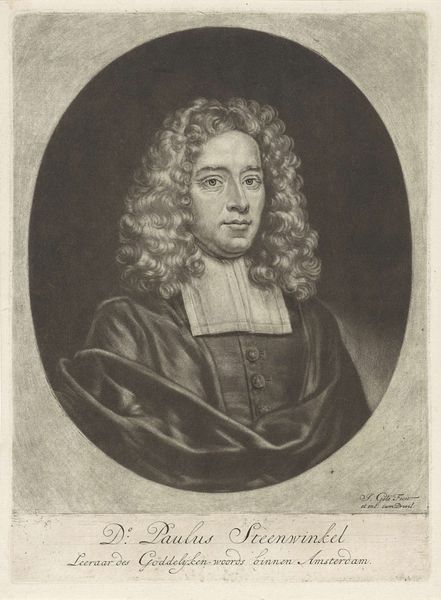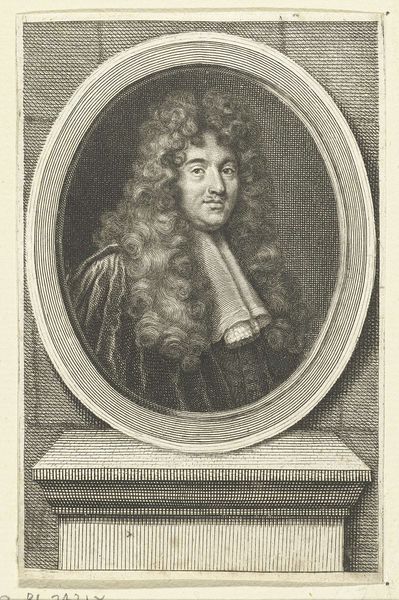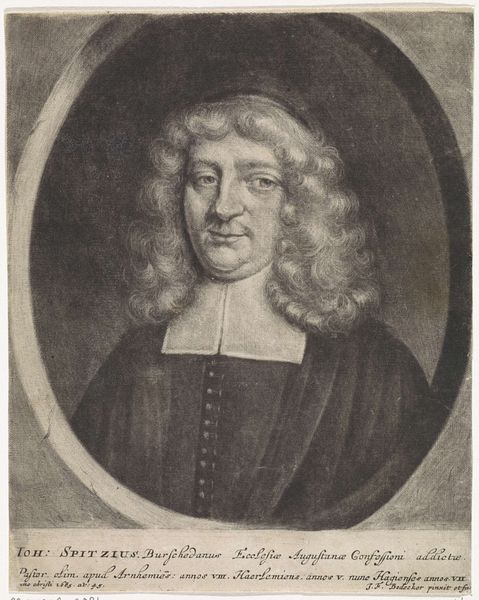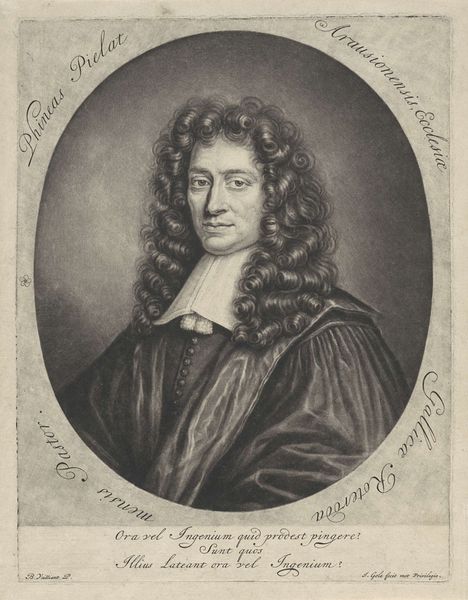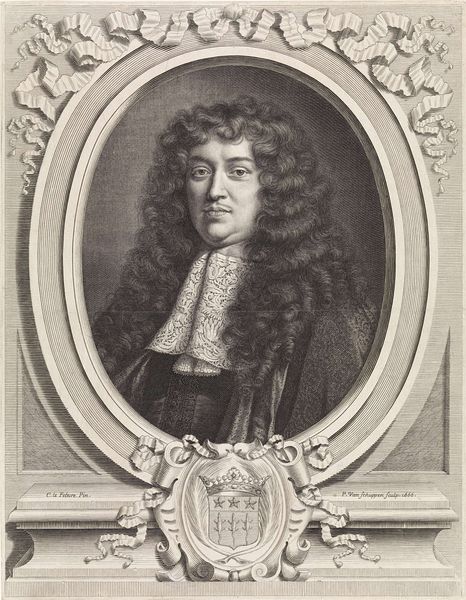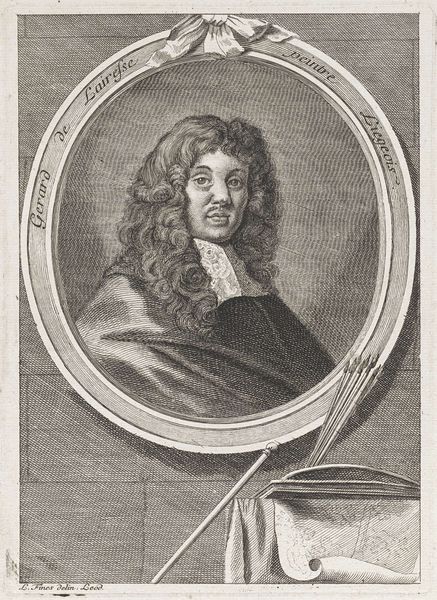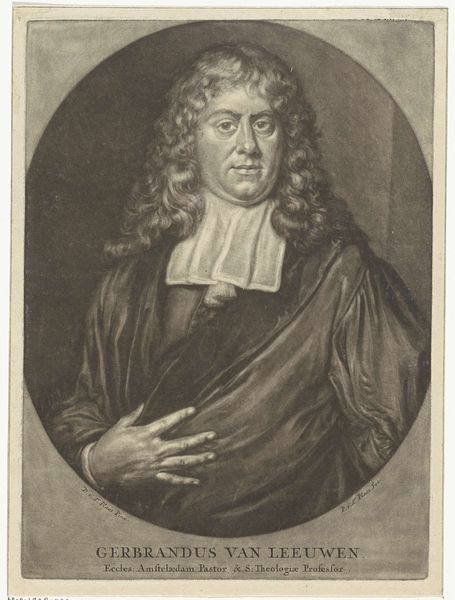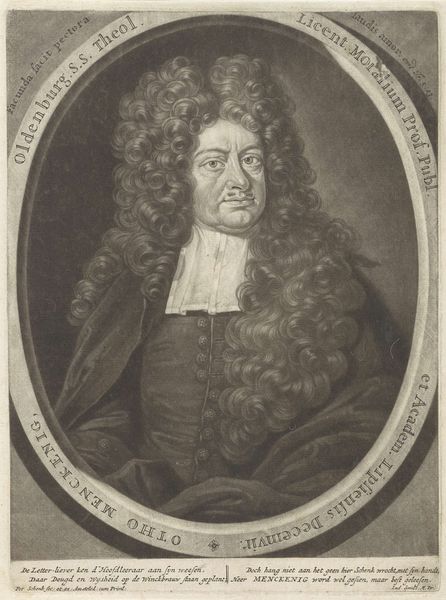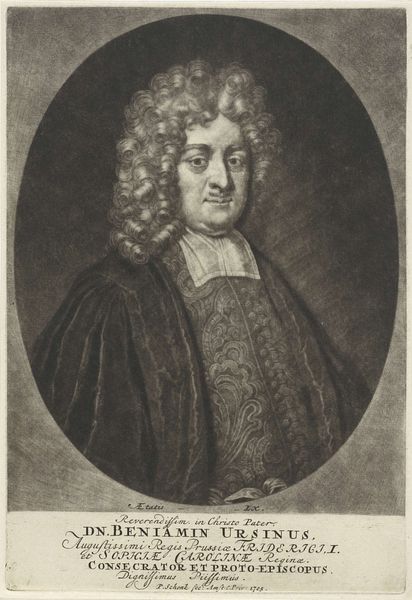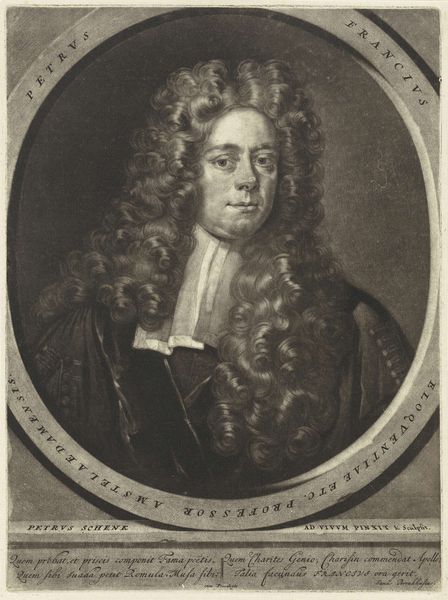
print, engraving
#
portrait
#
baroque
#
dutch-golden-age
# print
#
old engraving style
#
portrait reference
#
engraving
Dimensions: height 302 mm, width 219 mm
Copyright: Rijks Museum: Open Domain
Curator: Let's take a look at "Portret van Johan Spitzius," an engraving created in 1697 by Jacob Gole. Editor: My initial impression is quite somber. The tones are muted, dominated by this dense darkness against a pale background. It’s austere, dignified. Curator: Gole was a master of the mezzotint, known for its rich tonal range achieved by roughening the metal plate. This one exemplifies the sophisticated printmaking techniques of the Dutch Golden Age. Notice the incredibly fine lines rendering Spitzious’s elaborate wig. It suggests a complex process and attention to the very nature of how reproducible images were conceived. Editor: The sitter, Johan Spitzius, would have been somebody in his community, his location and affiliation rendered by his presentation. The Baroque period really shows its power here! It makes me consider the status imbued by appearances like clothing. How does fashion and the production of textiles at this period affect our perception of this man? It makes me wonder about class. Curator: Exactly. The act of commissioning an engraved portrait speaks to status and wealth. These images were meticulously produced. Consider, the tools, the labor. How much copper would someone of that status require to signal prestige in that era? This work reveals much about societal structures, but through the lens of material and craftsmanship. The physical making. Editor: I suppose I was more absorbed by how his likeness and title might engage social perceptions and the intersections of identity during the Dutch Golden Age. The careful inscription beneath underscores this man's roles, further connecting him to notions of piety and erudition. Curator: I see your point entirely, it is impossible to ignore the weight of meaning held within the iconography of this Baroque Era figure, I guess I am interested in what made the production of all those statements physically possible at the time. Editor: Well, by investigating both, we paint a more nuanced picture, don’t we? This somber portrait opens doors into social hierarchy but also considers how craftsmanship made this world, how power takes on forms with their material trappings. It reminds us of the dynamic relations within a portrait as a representation of power and how one can analyze power in the context of how objects become that tool to carry meanings forward. Curator: Indeed. Thanks for those insights, it offers a great entry point for others.
Comments
No comments
Be the first to comment and join the conversation on the ultimate creative platform.
